Intel Core i9-10850K Review: The Real Intel Flagship
by Dr. Ian Cutress on January 4, 2021 9:00 AM EST- Posted in
- CPUs
- Intel
- Core
- Z490
- 10th Gen Core
- Comet Lake
- LGA1200
- i9-10850K
Gaming Tests: Far Cry 5
The fifth title in Ubisoft's Far Cry series lands us right into the unwelcoming arms of an armed militant cult in Montana, one of the many middles-of-nowhere in the United States. With a charismatic and enigmatic adversary, gorgeous landscapes of the northwestern American flavor, and lots of violence, it is classic Far Cry fare. Graphically intensive in an open-world environment, the game mixes in action and exploration with a lot of configurability.
Unfortunately, the game doesn’t like us changing the resolution in the results file when using certain monitors, resorting to 1080p but keeping the quality settings. But resolution scaling does work, so we decided to fix the resolution at 1080p and use a variety of different scaling factors to give the following:
- 720p Low, 1440p Low, 4K Low, 1440p Max.
Far Cry 5 outputs a results file here, but that the file is a HTML file, which showcases a graph of the FPS detected. At no point in the HTML file does it contain the frame times for each frame, but it does show the frames per second, as a value once per second in the graph. The graph in HTML form is a series of (x,y) co-ordinates scaled to the min/max of the graph, rather than the raw (second, FPS) data, and so using regex I carefully tease out the values of the graph, convert them into a (second, FPS) format, and take our values of averages and percentiles that way.
If anyone from Ubisoft wants to chat about building a benchmark platform that would not only help me but also every other member of the tech press build our benchmark testing platform to help our readers decide what is the best hardware to use on your games, please reach out to ian@anandtech.com. Some of the suggestions I want to give you will take less than half a day and it’s easily free advertising to use the benchmark over the next couple of years (or more).
As with the other gaming tests, we run each resolution/setting combination for a minimum of 10 minutes and take the relevant frame data for averages and percentiles.
| AnandTech | Low Resolution Low Quality |
Medium Resolution Low Quality |
High Resolution Low Quality |
Medium Resolution Max Quality |
| Average FPS | 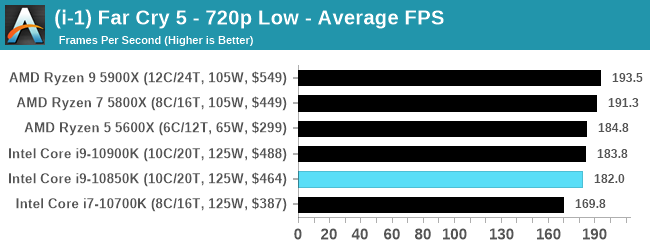 |
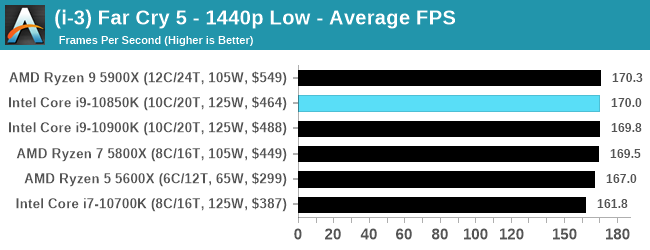 |
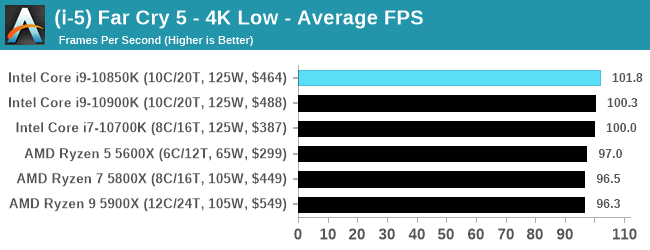 |
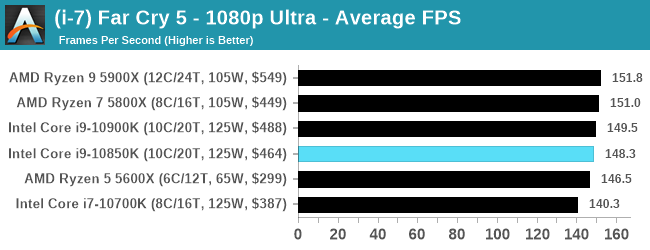 |
| 95th Percentile | 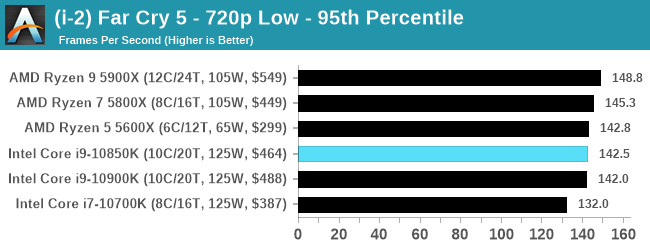 |
 |
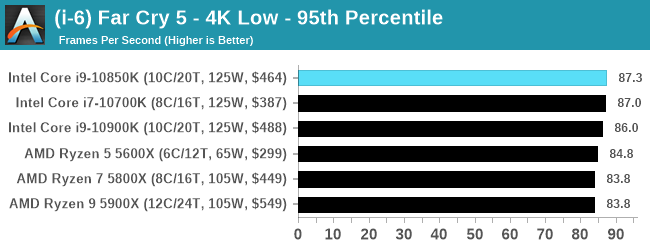 |
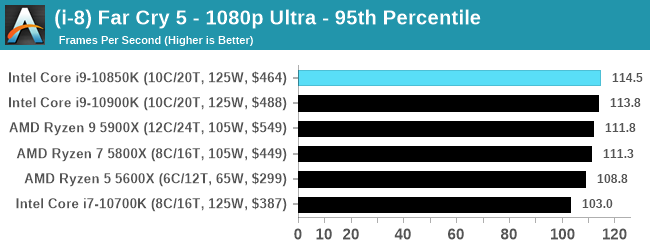 |
All of our benchmark results can also be found in our benchmark engine, Bench.


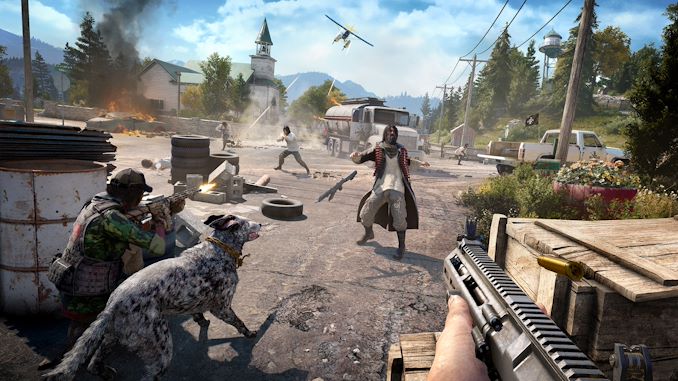









126 Comments
View All Comments
temps - Tuesday, January 5, 2021 - link
Sorry but most of us professionals have moved to Thunderbolt interfaces. How can Ryzen outperform Intel at something it can't support?Qasar - Tuesday, January 5, 2021 - link
so because ryzen doesnt support thunderbolt, the whole platform is slower? thats just stupidtemps - Wednesday, January 6, 2021 - link
I said "outperform" not "slower." Besides, when I built my PC the only AMD that actually was faster than it was the 3900X, which you couldn't buy anywhere at the time. In fact, I still can't get one locally.Zoolook - Wednesday, January 6, 2021 - link
You seem pretty ignorant, there are plenty of am4 motherboards with thunderbolt support.temps - Wednesday, January 6, 2021 - link
What a joke, I can find exactly one officially certified AM4 motherboard and it's mini ITX. Again, we need these for work. I'm not going to run an uncertified, unsupported setup.Qasar - Wednesday, January 6, 2021 - link
zoolook is right, temps, you do seem pretty ignorant if you think just because intel has thunderbolt, it out performs amd, but you dont say how. thunderbolt has nothing to do with how fast a comp is, its a connection interface for external devices, like usb.temps - Wednesday, January 6, 2021 - link
I already said my audio interface needs Thunderbolt... so really, a Celeron outperforms AMD for my requirements. Good job reading. Good day.TheinsanegamerN - Tuesday, January 5, 2021 - link
They did, they were called HDET, and you whined they were too expensive.eastcoast_pete - Monday, January 4, 2021 - link
Thanks and Happy New Year! @Ian and all, one question I had for a while is why Intel or AMD don't use the approach that Qualcomm (with help from ARM and TSMC) started with their 865 SoC? AFAIK, they specifically designed and made one of the four big cores as the core with the highest performance and frequency, and the 888 and others are now using that approach even more formalized by having a single X1 core alongside the 3 A78 big cores. So, is an approach like this - one dedicated high frequency, larger cache etc core plus 5, 7 and 15 others- possible and feasible in x86/x64 CPUs, and if so, why isn't it used? Thanks!Otritus - Monday, January 4, 2021 - link
The windows scheduler was not good enough to properly allocate workloads to the best cores, losing out on performance and efficiency. Intel believes that the scheduler will be good enough when they launch their 12th gen CPUs using Golden Cove and Gracemont cores.